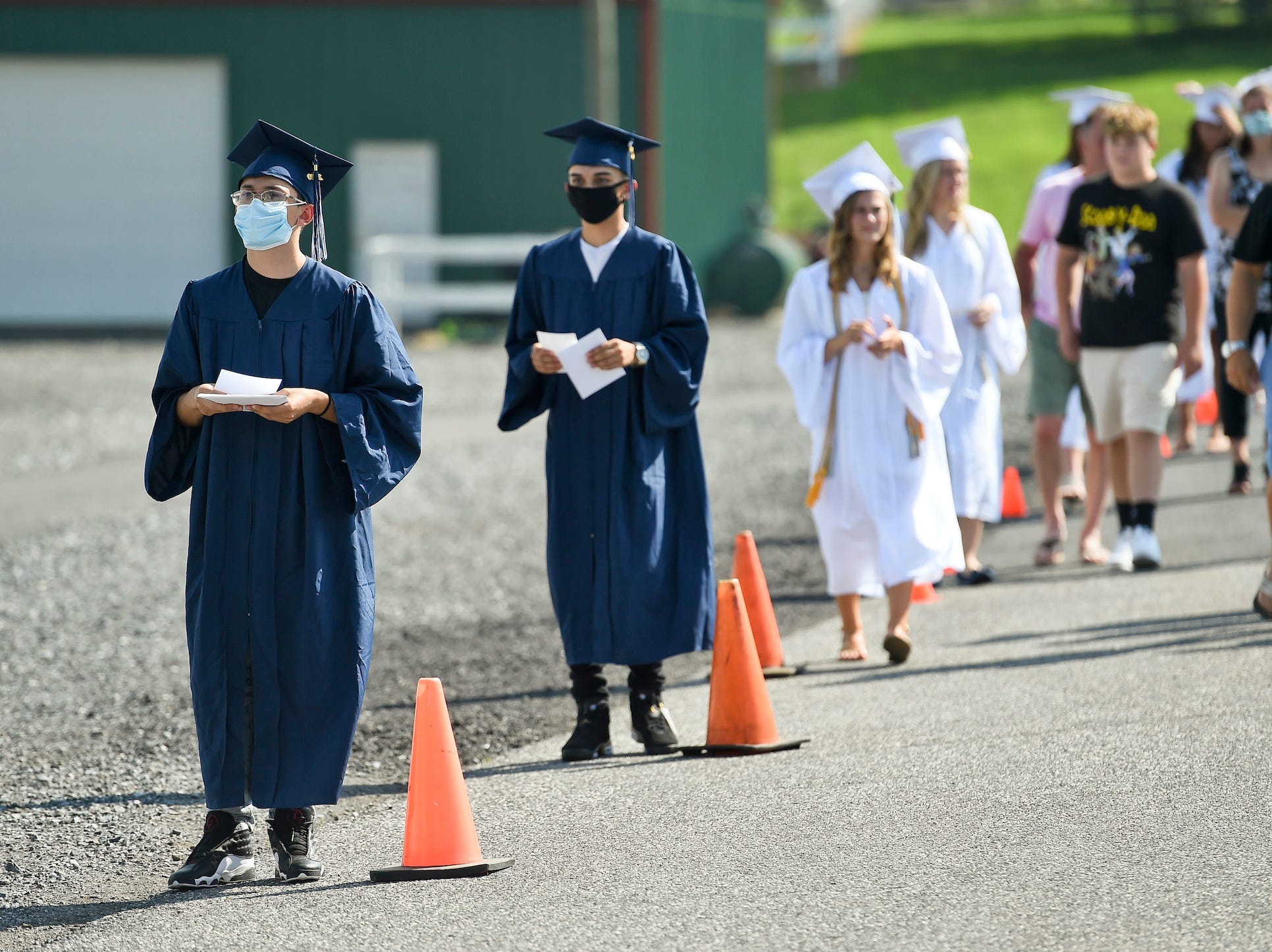
Ben Hasty/MediaNews Group/Reading Eagle via Getty Images
- High school graduation rates are expected to fall at US public schools this year, the Wall Street Journal reported.
- While this year's data is not yet available, early projections point to what will likely be the first decline in ten years.
- Students, educators, and health professionals cite difficulties with remote learning, social isolation, and mental health.
- Visit Insider's homepage for more stories.
High school graduation rates are expected to decline this year as a result of the pandemic's impact on education and teenage mental health.
The graduation rate among high school seniors at US public schools in 2019-2020 school year was 86% and has been on the rise for the past 10 years, according to the National Center for Education Statistics. While 2020-2021 data is not yet available, early projections indicate a coming percentage drop, with students and educators citing the challenges of remote learning and social isolation.
According to data cited by the Wall Street Journal, high school seniors had the lowest percentage of assignment completion across grade levels, noting factors like difficulty focusing, trouble with at-home learning, and inability to process information.
"Education as it is right now feels like it's just memorizing things, but I feel like I can't even do that in the ways I used to because it's hard to stay focused staring at screens seven hours a day," Maya Schenk, a recent high school graduate in Maryland, told the Wall Street Journal.
The expected decline despite amid state-level policies created in response to the pandemic, including waiving requisite standardized testing and permitting students to repeat their senior year if necessary.
Still, some areas that rolled out efforts to help bolster graduation rates aren't seeing results. According to the Wall Street Journal's findings, 81.03% of seniors in Columbus City School in Ohio graduated in 2020 compared to a projected 72.06% in 2021. Similarly, Jefferson County Public Schools in Kentucky reported in April that 72% of seniors were on track to graduate, down from 83.7% that graduated the year prior.
Beyond the pandemic's strain on learning, young Americans have been further inhibited by record rates of mental illness in 2020.
According to an April survey from the Centers for Disease Control and Prevention, 18-to-24-year-olds responded with the highest levels of anxiety and depression of any age cohort, with 62.9% reporting symptoms of one or both conditions.
Further, Dr. Harold S. Koplewicz, president and medical director of the Child Mind Institute, told the New York Times that the demographic of Americans age 13 to 24 are "suffering the most" from social isolation.
"In the more than two decades I've spent as a psychologist working with adolescents, I have never seen teenagers so worn down at the end of an academic year as they are right now," Lisa Damor wrote in a recent column for The New York Times. "Whether classes have been online, in-person or hybrid, young people are dragging themselves to the finish line of a frustrating, depressing and, for some, unbearably isolating year of school."

